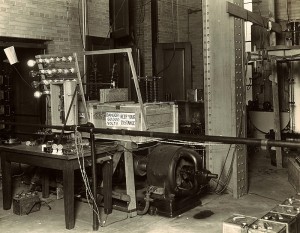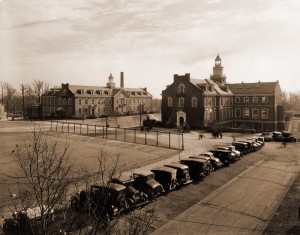On March 21, I was asked to speak to a luncheon group for the Legacy Circle of the Whiting School of Engineering. I gave them a capsule history of Johns Hopkins, and Engineering in particular, and I thought I’d offer a synopsis of that talk here.
As early as 1876, Daniel Coit Gilman alluded to engineering being a useful part of a university curriculum. Still engaged in working out the details of creating this University, he did not wish to take on the task of determining how engineering could fit into the curriculum. Up to that time, engineering training had focused on teaching mechanics how to assemble and repair machinery. Engineering was seen as an essentially pragmatic field that would not benefit from the University’s philosophy of “learning by doing” (i.e., the seminar method). Gilman was opposed to adding engineering instruction on a “conventional” basis, which would result, he felt, in having “an excellent polytechnicum but not a university.” But he was not opposed to the idea, if it could be done right.

Some engineering instruction was already being carried on, mostly in electrical engineering, under the aegis of Physics. It was possible to earn, separate from the Bachelor of Arts, a Proficiency in Applied Electricity (PAE) certificate. John B. Whitehead earned a PAE in 1893, and a PhD in 1902 and was serving on the faculty as of 1900.
As the university grew in its original location (in the vicinity of Howard and Monument streets), there was no room for engineering, nor was there money to pay for it. Everyone assumed that engineering, when it began, would have to come with outside financial assistance. And that is how it happened. In 1912, the Maryland legislature appropriated $600,000 for a department of “applied science and advanced technology,” and pledged $50,000 per year in future support. Probably because the University of Maryland was primarily an agricultural school, the legislature specified that the engineering program should be located at Johns Hopkins. There were no restrictions placed on the money, except a requirement to offer scholarships to Maryland students. Space was no longer an issue because the University planned to move to Homewood by 1916.

In 1913, the first engineering faculty members were named: Charles J. Tilden (Civil Engineering), Carl C. Thomas (Mechanical Engineering), and John B. Whitehead (Electrical Engineering), and instruction began in the new Department of Engineering. Two new buildings were planned at Homewood for engineering – the Mechanical and Electrical Engineering Building (renamed Maryland Hall in 1931), and the Civil Engineering Building (renamed Latrobe Hall, also in 1931). Maryland Hall was built at the same time as Gilman Hall and both were dedicated on the same day – May 21, 1915. Latrobe Hall was completed in 1916. In 1920, Engineering became a separate division alongside Arts and Sciences.
The status quo continued until 1966 when, in a move that initially was welcomed by nearly everyone, the School of Engineering merged with the Faculty of Philosophy to form the School of Arts and Sciences. Immediately after the merger, as reported to me by former dean Robert Roy, Engineering faculty realized the mistake they had made, when it became more difficult to attract the best faculty candidates, and graduate students as well. In 1979, the GWC Whiting School of Engineering was created and Engineering once again became a separate division within the University.
For further information, consult Mary Ruth Yoe’s Hopkins: Engineering at the University (1989), written for the tenth anniversary of the Whiting School. The Whiting School is also planning a new history of Hopkins engineering.
